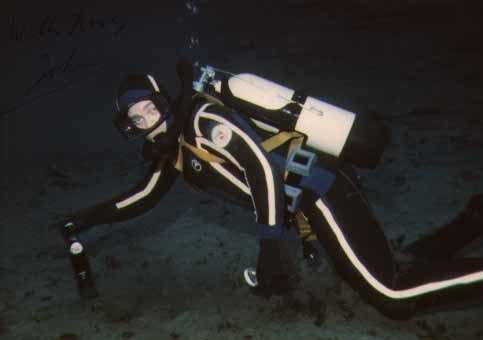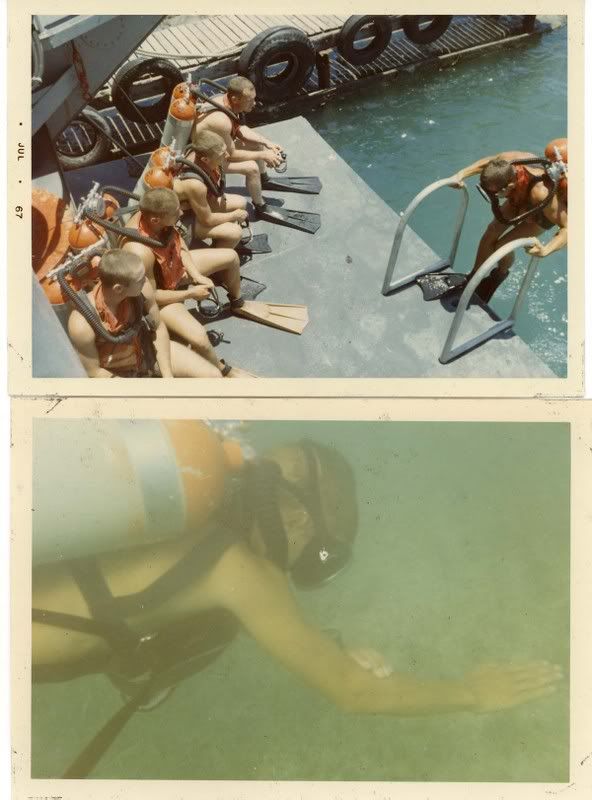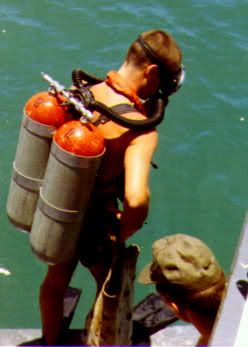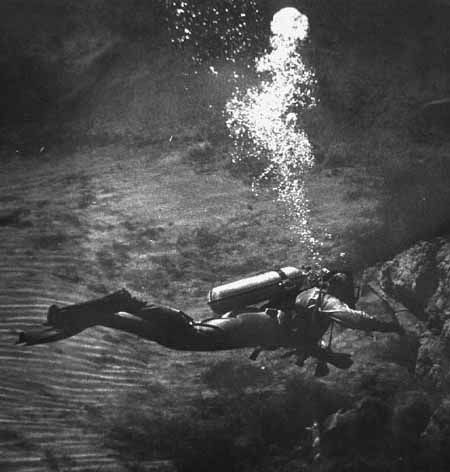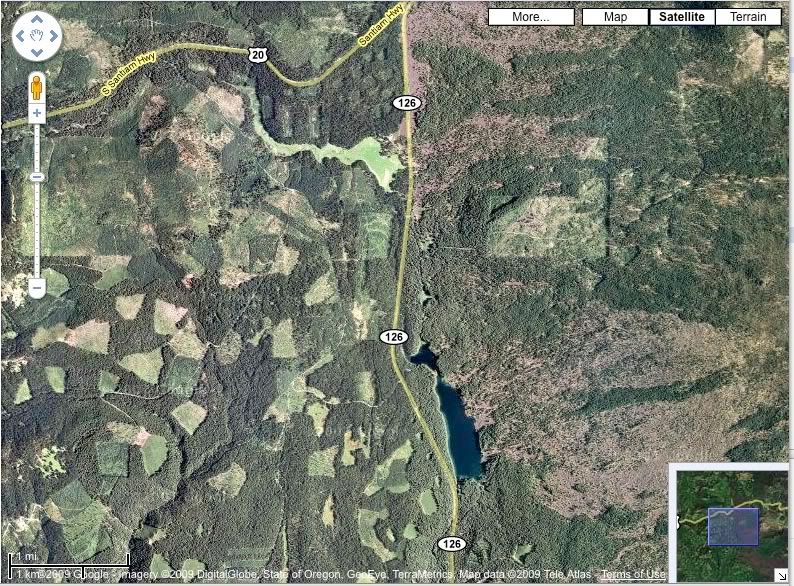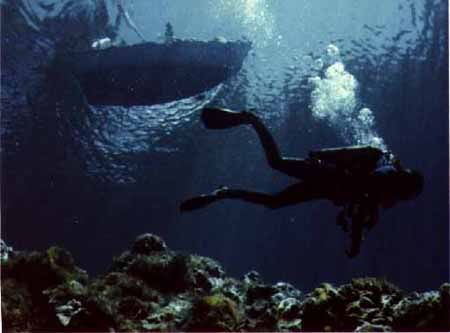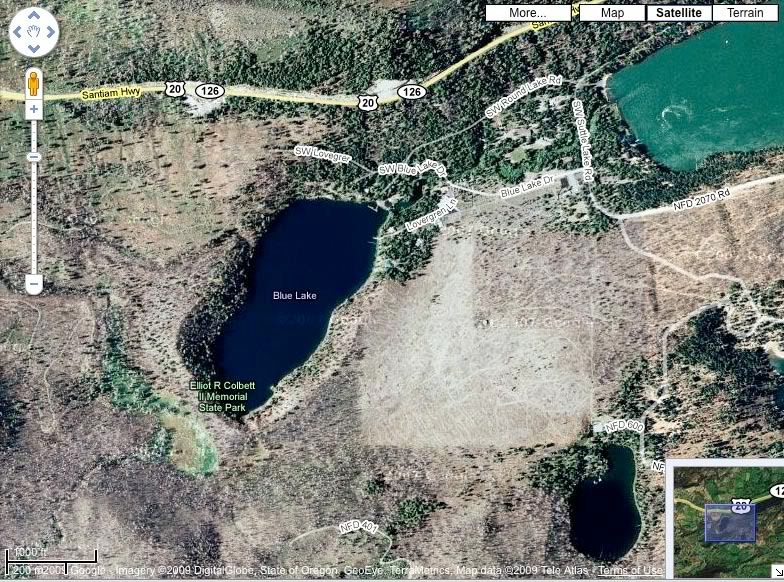Bill,
There is no cut-and-dried method of saying what is "vintage" and what is not. What I'm trying to show is the evolution of diving techniques, from the "vintage" era in the 1950s and 1960 (through about the mid-1970s). This technique was using basic gear: mask; fins; snorkel (sometimes); and an aqualung (scuba) consisting of a regulator, tank and harness. Added to this was a diving suit, usually a wet suit, which also evolved, with a weight belt to sink us. We weighted ourselves for the depth that we went to, and struggled down to that depth positively buoyant. Here is a photo which illustrates that technique:
You can see, I'm just the correct buoyancy in about 1973 for this dive.
Early in my diving, in high school in the 1960s, I dove my first single hose regulator as a single hose. It was a Healthways Scuba Star:
In 1967, I went through the US Navy School for Underwater Swimmers, and here it was pure "vntage" diving: mask, fins, (no snorkel), Aqualung (yes, the real deal, USD twin 90 aluminum tanks and a DA Aquamaster regulator), swimsuit, and US Navy vest (for surface lifesaving), and a dive watch.
Getting ready for a harbor, black-water dive. We used the J-reserve and no SPG. We got good results by knowing our air consumption rate, depth, and planned for no-decompression. We also used a wrist compass, and swam in buddy teams hooked together with a buddy line. If we surfaced away from our buddy, we were given a "buddy line" to carry everywhere for the next 24 hours--only this buddy line was six inches thick, and ten feet long, weighing in excess of 60 pounds.
My equipment continued to evolve, and I got a dry suit because in Clear Lake (Oregon Cascade Mountains) I froze in a wet suit after about 45 minutes. Here's that photo:
Note that I'm also now using a SPG with my system. The dry suit is an Aquala, to which I added a power inflator. It is worn over the farmer John bottoms of a wet suit, with a wool sweater over that, and a wool hood (stocking cap which converted into a hood).
A dive shop owner, Bill Herder of Deep Sea Bill's in Newport, Oregon (where I did a lot of diving in the 1970s) decided to experiment with a better system. He had decried the "push button divers" who were using power inflators with very awkward BC systems, so he decided to design his own. He decided to do something better, by designing a BC system into the back of the wet suits he built (he was a LDS which custom built wet suits for the local divers). I took his invention and demonstrated it at the Sixth International Conference on Underwater Education, sponsored by NAUI (IQ6) October 4-6, 1974. During that pool demonstration, which was attended by manufacturing reps, and I think by Scubapro (see the photo below), I demonstrated both the inverted "U" built into my wet suit by Bill, and a BC vest built of wet suit materials (1/8 inch skin inside foam neoprene, which was sealed with black seam tape). Here is a photo of that demonstration:
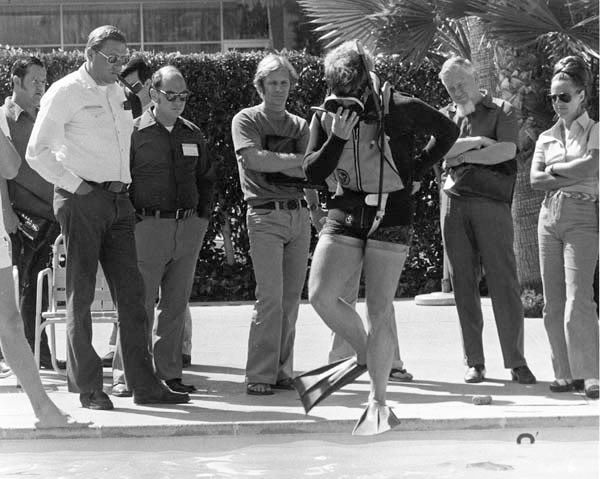
What I am saying is that the advances in BCs, "push-button diving" if you will, marks the end of the "vintage" era. With it, and the SPG, came a completely different style of diving, one more dependent upon the dive equipment. SPGs evolved into "counsels" which numerous gauges on them, instead of on the diver's wrists. Techniques were modified, swimming was reduced and divers ascended and descended more like submarines than like swimming divers. Water skill sets were de-emphasized,and "anyone can dive" became the industry norm. This gets us into the modern era, where divers are now completely dependent upon their equipment to dive. Water skills are minimal for basic scuba; fitness in also de-emphasized.
I'm not saying that this is all bad, just very different from vintage diving.
John
 .
.


